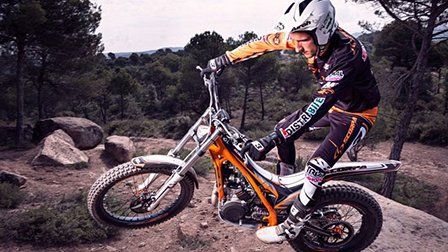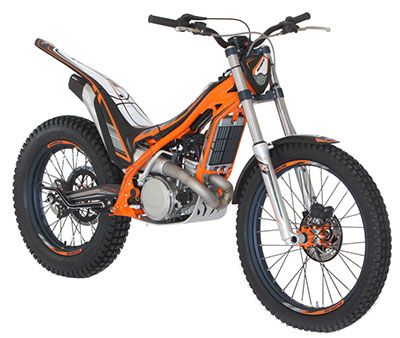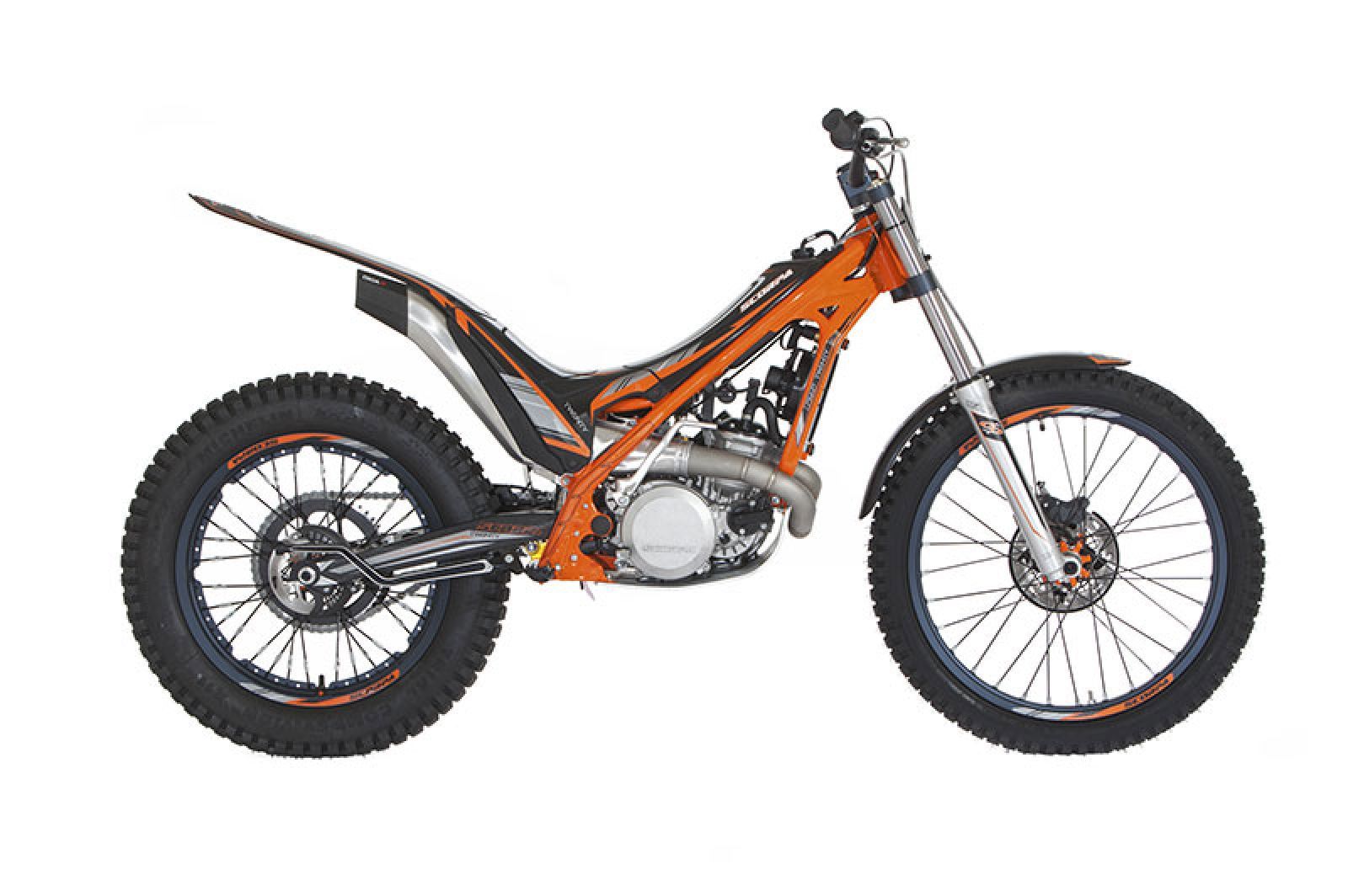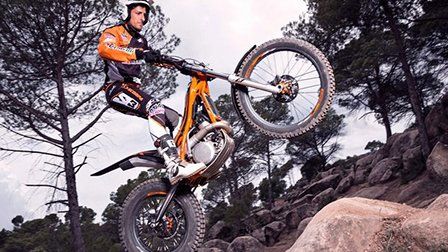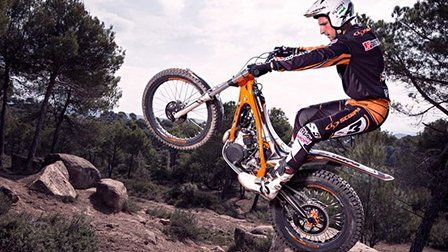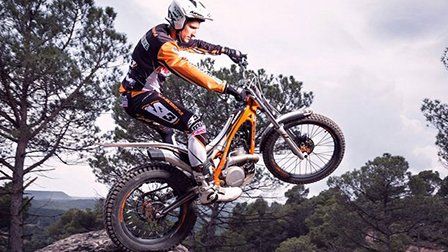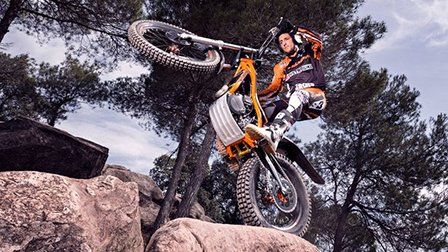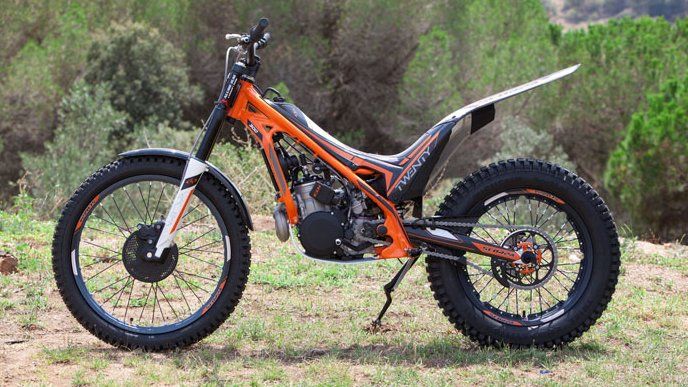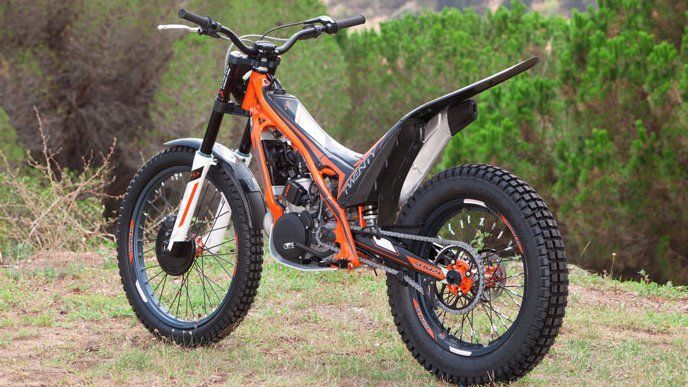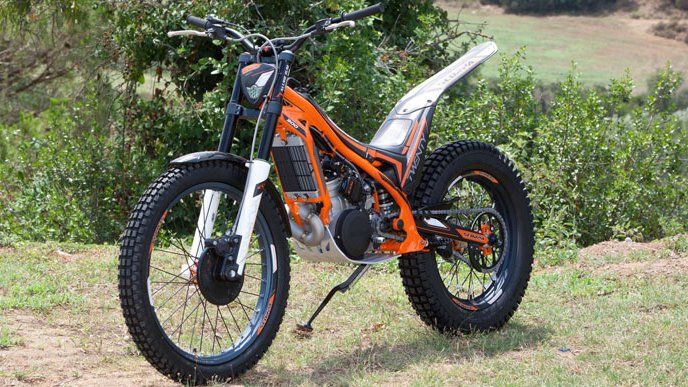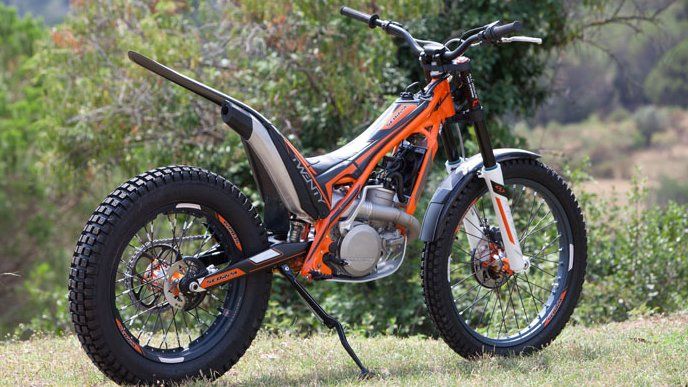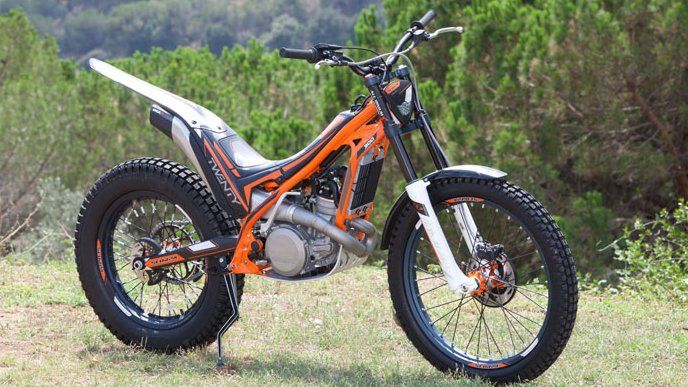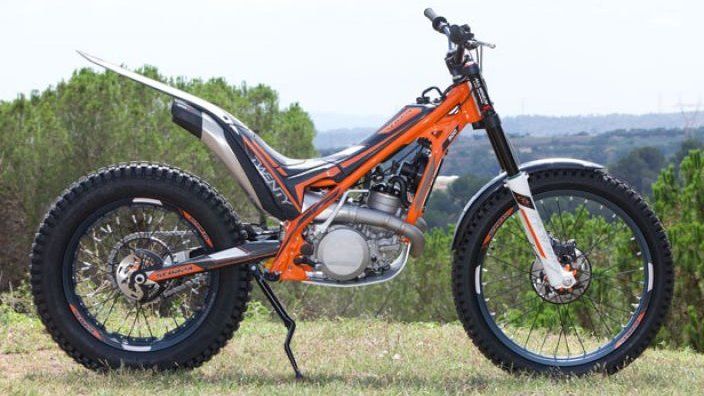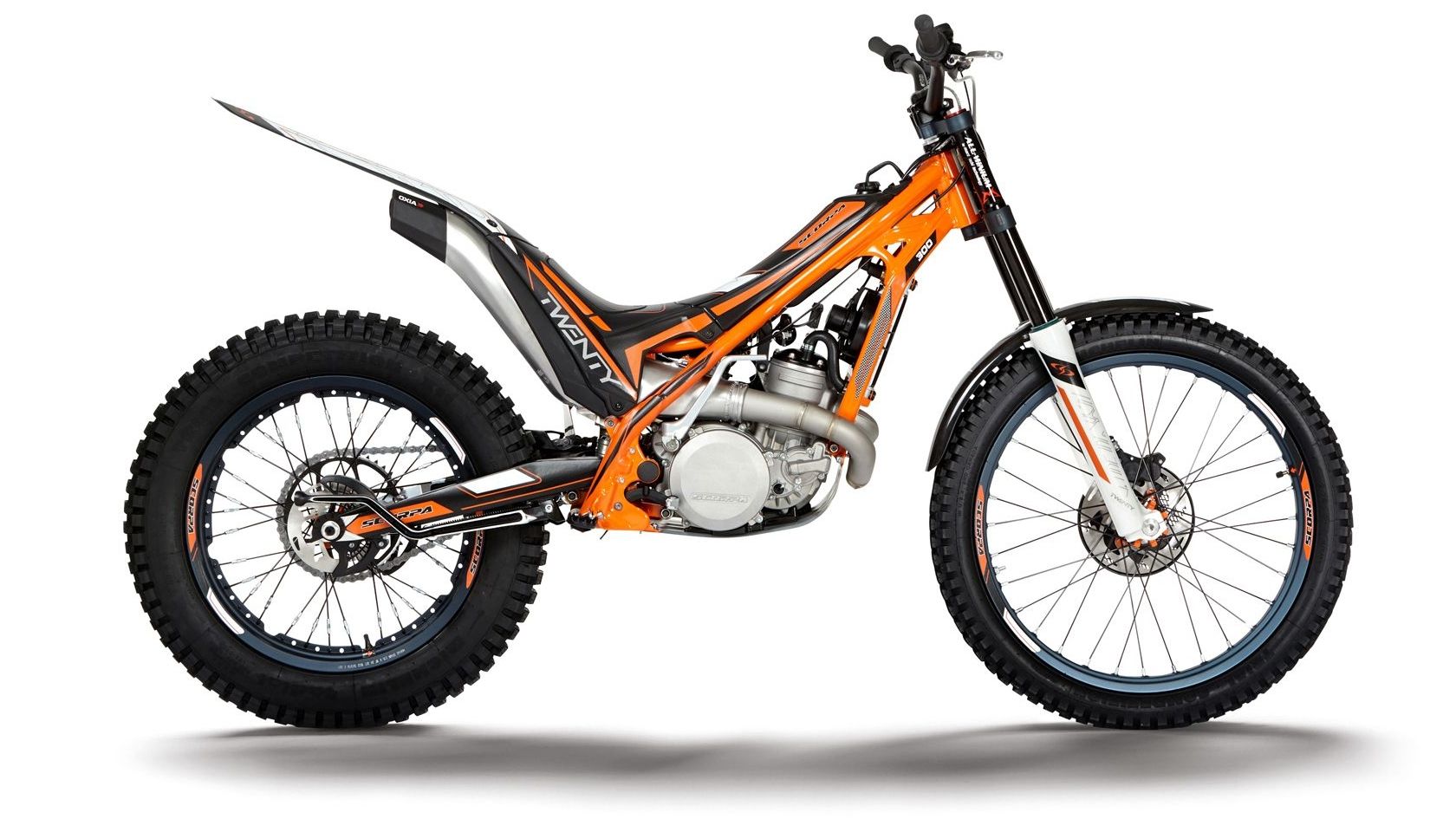Revealed at the 2014 EICMA show in Milan, the Twenty family -- named so to commemorate Scorpa->ke2324's 20-year anniversary -- includes three models: the 125, 250 and 300. For 2016, we see major changes and new features -- many of which are brought about through data gathered at the World Trials Championship -- to launch the second generation of the Twenty line.
If you looked at Scorpa before, look again. The Twenty trials bikes are more competitive than before, even for such a young lineup. They're not just a dressed up SR model.
Continue reading for my review of the Scorpa Twenty 125, 250 and 300.
2016 Scorpa Twenty 125/250/300
- Make: Array
- Model: 2016 Scorpa Twenty 125/250/300
- [do not use] Vehicle Model: Array
Design
For budding young trials riders, the Twenty 125 offers a beginner's platform that is, in all essence, the same bike as bigger siblings in the Twenty lineup. The smaller engine is a good place to cut their teeth before they move up the range.
The Twenty 250 and 300 are the main players with an engine that is smooth at low revs and still packs a punch in mid-to-high ranges. Outstanding handling and control makes these siblings suitable for novices all the way up to the pros.
New for 2016, the factory went with a new handlebar shape for better control and strength to execute those mountain goat maneuvers. Performance was enhanced through a higher-efficiency air filter inlet, new reed petal support and a new thermostat control sensor. To keep the inlet air as cool as possible, new thermal insulation in the air box better protects it from engine heat.
Chassis
Given the nature of their use, trials bikes need an exceptionally tough frame to stand up to the beating they take in competition and practice. To that end, Scorpa beefed up the frame design for 2016 and started with a double-downtube frame made from chrome-molybdenum steel tubing for strength with just a little bit of give and. A stressed engine arrangement reduces frame weight by eliminating a chunk of tubing from the bottom of the downtubes to the rear motor mount, and a skidplate protects the engine in its prominent position in the gap.
The chassis, suspension and braking components are identical across the engine range, the only exception being the slightly lower seat on the 125 cc version at 25.39-inches tall versus the 250 cc and 300 cc at 25.43-inches tall. This allows the kiddies to become familiar with the machine early, and potentially ride the same chassis, if not engine size, throughout their trials careers.
Trials bikes don't need much in the way of brakes, and so the 185 mm front disc and 145 mm rear disc with hydraulic calipers are sufficient for the purpose, if tiny compared against streetbikes. A 39 mm, Marzocchi aluminum hydraulic front fork buoys the front end on 6.5 inches of travel, while a monoshock on a progressive link floats the rear on 6.89 inches of travel, plenty for the mountain goat-like maneuvers required for trials.
Drivetrain
As the ingeniously clever names suggest, the Scorpa Twenty comes in three separate displacements. First, there's the “learner's bike,” the 125 with a 123.7 cc engine. Next up is the 250 with a 249.7 cc, and finally the “big boy” 300 with a 294 cc mill. All three engines come in a single-cylinder “thumper” configuration that delivers well-defined power pulses for increased control and traction. The two-cycle engines run with water jackets and a radiator to vent waste heat, and they all run on 98 octane with a two-percent premix.
A 28 mm Keihin carburetor manages induction, and a Hidria digital ignition system -- reprogrammed for 2016 to work with the new higher-performance muffler -- handles the spark. The cylinder bores come with a Nikasil coating for an extended service life. Engine power flows through the gear-type primary drive to the wet clutch where the five-speed transmission turns the rear wheel via a chain final drive.
None of the bikes mount a battery of any sort, and rely entirely upon the fold-up kickstarter lever with a new-for-2016 kickstarter design to light the fire. Well, I suppose not entirely, I have pop started small engines like this on the stand just by turning the rear wheel by hand, so pop starting in the field should be a breeze.
Competitors
While pondering a competitor for the Scorpa Twenty family -- would it be cheating to look at a Sherco->ke4815? -- I decided on the Evo 300 from Beta->ke2310. The trials bike form is driven purely by function, so it's no surprise that the two are nearly identical side-by-side; except for the fabulous orange and black colorway on the Scorpa, of course.
The Beta mill is a skosh bigger at 299 cc, five cubes bigger than the Twenty 300 lump, and it comes with a six-speed transmission instead of a five. I must confess that I am unsure if the number of gears lends any sort of advantage, one way or the other. Both engines run on pre-mix unleaded fuel metered by Keihin carbs, a solid name in carburetors, and one that gets used in many applications, including older Harleys->ke300.
Beta opted for an aluminum frame instead of steel, and that contributes to the lower weight of 146 pounds versus 151 pounds for the Scorpa Twenty. This is a critical point, as lighter machines are easier to hop around on, and that 5 pounds may be a deciding factor for highly competitive buyers.
versus0}
My husband and fellow writer, TJ Hinton, says, “I wish I knew more about the sport, but all I am sure about is that I become mesmerized watching trials riders work, and just stare in amazement. That said, this looks like a solid little bike, and there is a lot to be said for working the same chassis as you progress through the years and racing brackets. The benefits of muscle memory cannot be overstated, and the aggravation of retraining said memory can be a mortal, pain in the butt, so staying with a familiar chassis should certainly have its benefits.”
He Said
"I really enjoy watching trials competitions. I'm much too long in the tooth to do stuff like that now. Trials is like watching dressage for motorcycles."
She Said
|
Drivetrain: |
|
|
Engine: |
Two-stroke |
|
Displacement: |
|
|
Twenty 125: |
123.7 cc |
|
Twenty 250: |
249.7 cc |
|
Twenty 300: |
294 cc |
|
Bore & Stroke: |
|
|
Twenty 125: |
54 x 54 mm |
|
Twenty 250: |
72.80 x 60 mm |
|
Twenty 300: |
79 x 60 mm |
|
Cylinder: |
Nikasil coated cylinder |
|
Lubrication: |
Two-percent oil pre-mix |
|
Carburetor: |
Keihin 28 mm |
|
Cooling: |
Liquid system |
|
Start: |
Geared system with folding lever |
|
Exhaust: |
Steel header pipe with an integrated aluminum muffler |
|
Transmission: |
Five-speed sequential gearbox with security selector system to prevent false shifts. Primary gear drive chain secondary drive |
|
Clutch: |
Hydraulic, multidisc in oil bath |
|
Ignition: |
Hidria digital |
|
Chassis: |
|
|
Frame: |
Tubular section frame Chrome-Molybdenum |
|
Front suspension: |
Marzocchi 39 mm hydraulic telescopic fork, 6.5-inch travel |
|
Rear suspension: |
Progressive link system with single adjustable shock absorber, 6.89-inch travel |
|
Rear shock absorber: |
R16V |
|
Brakes: |
Hydraulically activated, floating 185 mm front and 145 mm rear |
|
Wheel, Front: |
Morad 21-inch graphit anodized aluminum rim and aluminum hub, steel spokes |
|
Wheel, Rear: |
Morad 18-inch graphit anodized aluminum rim and aluminum hub, steel spokes |
|
Tires: |
Michelin tubeless |
|
Dimensions: |
|
|
Weight: |
|
|
Twenty 125: |
148.81 Pounds |
|
Twenty 250/300: |
151.01 Pounds |
|
Wheelbase: |
52.05 inches |
|
Ground clearance: |
12.2 inches |
|
Seat height: |
|
|
Twenty 125: |
25.39 inches |
|
Twenty 250/300: |
25.43 inches |
|
Details: |
|
|
Fuel Tank: |
Nylon 2.6 L capacity (... US gal) |
|
Recommended Fuel: |
98 Octane Unleaded |


